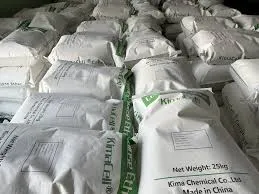
sept. . 16, 2024 13:06 Back to list
Buy Hydroxypropyl Methylcellulose - High-Quality HPMC for Various Applications
Understanding Hydroxypropyl Methylcellulose A Versatile Ingredient
In the ever-evolving world of science and technology, hydroxypropyl methylcellulose (HPMC) has emerged as a vital ingredient across various industries. Known for its versatility and compatibility with numerous compounds, HPMC has found applications in pharmaceuticals, food products, cosmetics, and construction materials.
HPMC is a semi-synthetic polymer derived from cellulose, a natural polymer obtained from plant cell walls. This compound is especially valued for its thickening, emulsifying, and film-forming properties. In the pharmaceutical sector, HPMC is often used as a binder and a controlled-release agent in tablet formulations. Its ability to form hydrophilic gels enables sustained drug release, making medications more effective and patient-friendly.
In the food industry, HPMC serves as a food additive, providing texture and stability to various products. It acts as a thickener in sauces, soups, and dressings, creating a desirable mouthfeel without compromising flavor. Additionally, it is used in gluten-free baking, where it mimics the elasticity and moisture retention that gluten typically provides. This allows for the production of high-quality gluten-free products that are appealing to a broader consumer base.
The cosmetic industry also benefits from HPMC, where it is incorporated into products like creams, lotions, and gels. Its ability to retain moisture and stabilize emulsions makes it an ideal choice for enhancing the performance of personal care items. Moreover, HPMC is often used in hair care products for its film-forming properties, providing shine and manageability to various hair types.
buy hydroxypropyl methylcellulose

In construction, HPMC is recognized for its water-retaining capacity and workability when mixed with cement and gypsum. It enhances the performance of mortars, plasters, and tiles, improving adhesion, flexibility, and durability. This quality has made HPMC an essential additive in modern building practices, contributing to the development of sustainable and resilient structures.
As industries continue to evolve, the demand for multifunctional ingredients like hydroxypropyl methylcellulose is expected to increase
. Researchers are constantly exploring new applications and improvements for HPMC, aiming to enhance performance and achieve specific functionalities.For those interested in purchasing hydroxypropyl methylcellulose, it’s crucial to source it from reputable suppliers that provide high-quality products. Thorough research and consideration of the intended application are vital in ensuring the selection of the most suitable grade of HPMC for your needs.
In conclusion, hydroxypropyl methylcellulose stands out as a remarkable ingredient with an extensive range of applications. Its unique properties continue to drive innovation in various fields, making it an invaluable asset in today’s marketplace.
-
Versatile Hpmc Uses in Different Industries
NewsJun.19,2025
-
Redispersible Powder's Role in Enhancing Durability of Construction Products
NewsJun.19,2025
-
Hydroxyethyl Cellulose Applications Driving Green Industrial Processes
NewsJun.19,2025
-
Exploring Different Redispersible Polymer Powder
NewsJun.19,2025
-
Choosing the Right Mortar Bonding Agent
NewsJun.19,2025
-
Applications and Significance of China Hpmc in Modern Industries
NewsJun.19,2025







